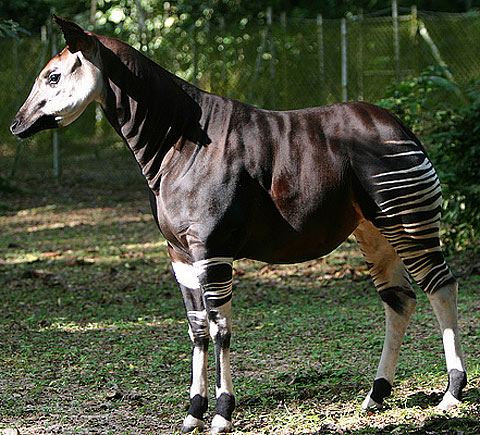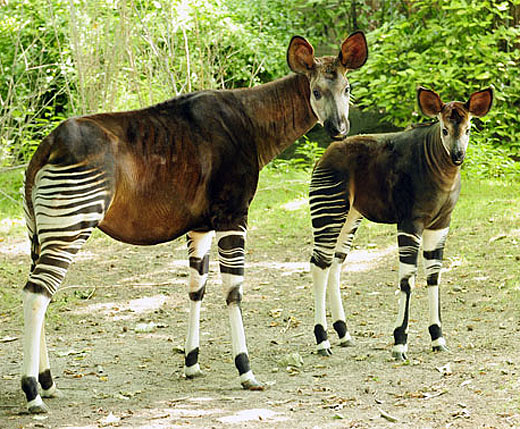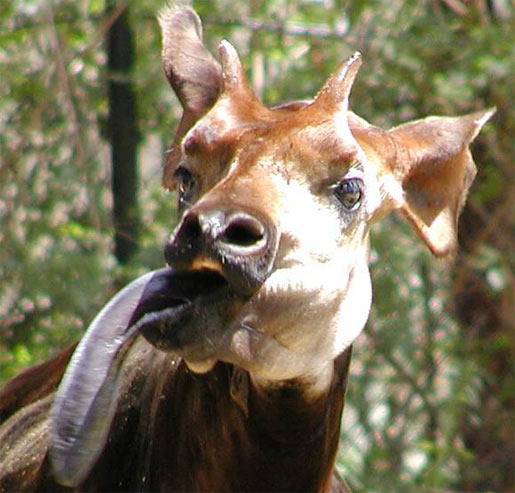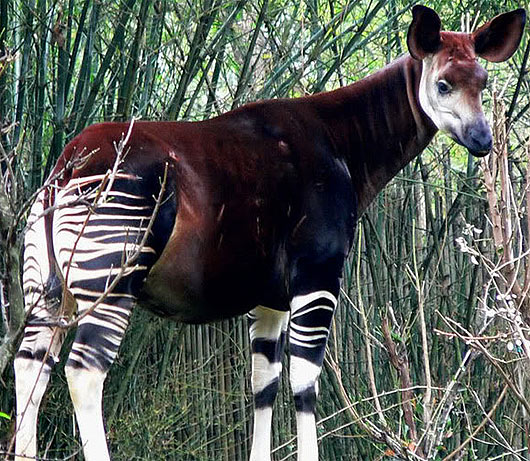Okapi – Zebra, Giraffe, Horse Mix

The Okapi is the kind of animal that you wouldn’t believe existed if someone just described it to you; since most descriptions refer to it as part horse, part zebra, and part giraffe. However, it is a very real relative of the giraffe (though the okapi obviously has a much shorter neck), and can be found not only in zoos, but running wild in the Ituri rain-forest of The Democratic Republic of Congo. It stands 4.9 to 6.6 ft (1.5 to 2 m) tall at it’s shoulders, and is 6.2 to 8.2 ft (1.9 to 2.5 m) long; with a weight of 440 to 660 lbs (200 to 300 kg).

For many years, the okapi, whose looks can be best described as that of a horse with a giraffe’s head and a zebra’s stripes on it’s legs, was thought to merely be a legend; it was even described as “The African Unicorn” by skeptics. However, In the late 1800s/early 1900s, Sir Harry Johnston was able to confirm the herbivore’s existence through remains given to him a pygmy tribe. Due to its close resemblance to a creature found in ancient Egyptian markings, the okapi is considered to be a living fossil; that is, a creature who appears to be related to a creature otherwise believed to be extinct. It’s most notable feature is obviously it’s striped markings, which many believe exist to help young okapis recognize and follow their mothers while traveling through the dense rain-forest. This recognition helps to preserve the baby’s life until it can separate from it’s parent.


Once independent, they tend not to form packs. Males are actually very territorial, although they seem to have no problem tolerating each other when forced to interact. Another notable characteristic of the okapi is it’s long, giraffe-like tongue, which it uses to strip leaves and buds from trees; and to clean itself (it’s tongue is long enough to reach the inside of it’s ear). Although deforestation threatens it habitat, the their numbers are strong. So despite spending most of it’s existence as a myth, the okapi is certainly real; and it appears it is here to stay.

